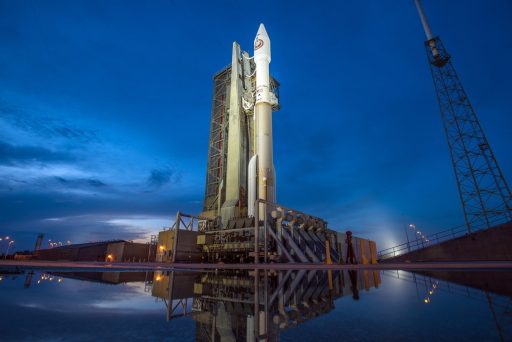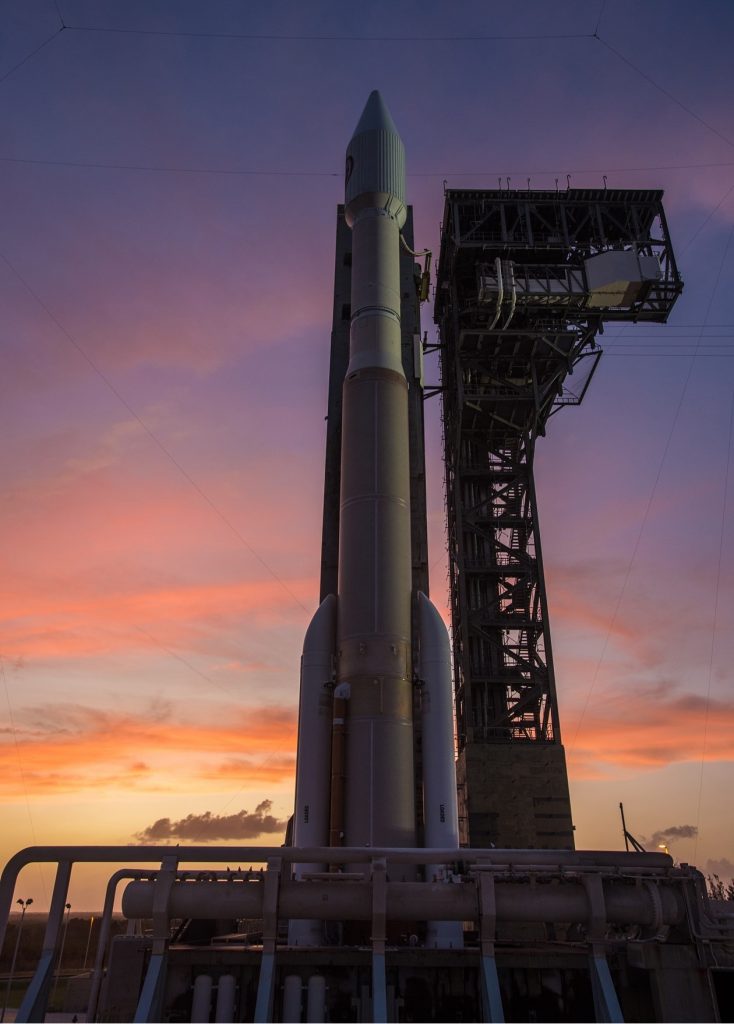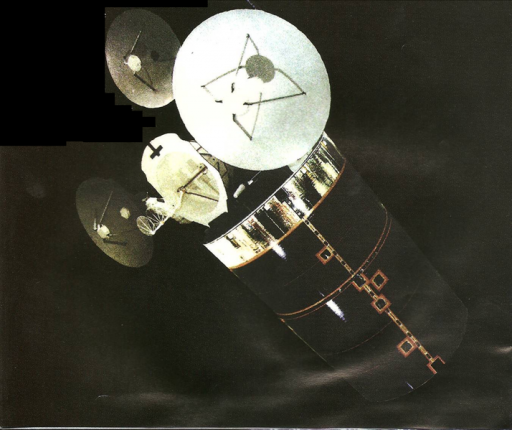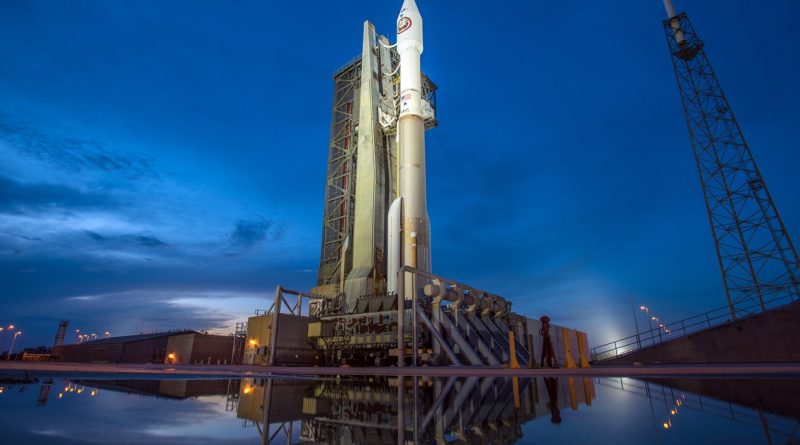Atlas V Rocket Rolls Back after Three Back-to-Back Launch Scrubs

ULA’s Atlas V rocket carrying the classified NROL-52 satellite for the U.S. National Reconnaissance Office has been forced to move back into its Integration Facility after suffering three consecutive launch scrubs earlier in the week. A new launch date will be established once repairs on the launch vehicle can be completed and coordination can be made with the Air Force-operated Eastern Range.
The 60-meter tall rocket had been on the pad at Cape Canaveral’s Space Launch Complex 41 since Tuesday, making attempts to launch on Thursday, Friday and Saturday morning with the first two attempts ending in a stand-down due to weather and teams backing out of the third countdown due to a technical issue on the rocket.
Thursday’s launch attempt ended when high ground winds associated with shower bands prevented the rocket from being safely loaded with cryogenic propellants, prompting a 24-hour recycle to Friday for which weather was also the prime concern with one-in-three odds of favorable conditions.

Fueling went without issue on Friday and Atlas V stood ready with the countdown holding at T-4 minutes while teams waited for a favorable gap in lightning and cumulus clouds; however, the attempt came to an end when a lightning trigger forced a countdown hold at T-1 minute and 37 seconds and Atlas V ran out of window time.
Saturday appeared to be looking better from a weather standpoint as odds of favorable conditions improved to 70%. Pressing into countdown operations, Atlas V was powered up seven hours before the opening of the classified launch window. Testing of the vehicle indicated a potentially serious problem with an S-Band telemetry transmitter on the launch vehicle and further testing showed the unit was failed for good and required replacement, ending the launch attempt prior to propellant loading.
This is the first Atlas V mission in the 74-flight, 15-year history of the program to experience three countdown scrubs. Only three previous missions had multiple scrubs and all those got off the ground on the third attempt.
The failure of the S-Band transmitter necessitated a rollback of the launch vehicle to the Vertical Integration Facility where replacement and re-testing work can be performed. Replacing the transmitter is a fairly straightforward task, though fully evaluating the root cause of the failure after two trouble-free countdowns may take additional work to ensure other vehicle systems were not affected by the problem. ULA said a new launch date for the mission will be announced once a forward plan has been developed.

The Eastern Range had originally been booked by SpaceX Saturday and Sunday for the launch of the SES 11 broadcasting satellite on a Falcon 9 rocket. A first stage issue caused that mission to slip to no earlier than Wednesday, allowing ULA to keep Atlas V out for the Saturday morning attempt. Range approval for the SES 11 mission for Wednesday & a backup on Thursday has not been confirmed yet and will also depend on the progress of repair work on the Falcon 9. If SpaceX can keep the Wednesday target, Atlas V is likely looking at liftoff in the second half of the week, at the earliest.
NROL-52 can be identified with a fairly high-degree of certainty as belonging to the fourth generation of the Satellite Data System (SDS) as the mission appears to be a repeat of the NROL-61 launch of 2016 that also used an Atlas V 421 rocket out of Cape Canaveral and deployed a single payload into Geotransfer orbit.
The Satellite Data System, operating under the code name Quasar, was inaugurated in 1976 and has since gone through four generations, initially operating from highly elliptical Molniya Orbits that allow for optimized coverage over the northern hemisphere.
>>Identifying the Classified NROL-52 Satellite

With the second generation, SDS began operating satellites in Geostationary and Molniya orbits, a pattern that continued into the third generation until the replenishment of Molniya satellites stopped around 2007 – indicating SDS moved to a pure-GEO-based system. The use of the more powerful Atlas V 421 rocket for NROL-61 and 52 suggests the satellites have gained mass as SDS moved into its next generation, in line with the use of the larger Extra-Extended Payload Fairing to fit larger satellites.
The Satellite Data System is similar in architecture to NASA’s Tracking and Data Relay Satellite System in that a number of satellites in Geostationary Orbit act as communication hubs – relaying commands from the ground to lower-orbiting satellites and routing data from satellites to their operators to achieve a real-time relay capability for the entire orbit of a satellite. SDS provides real-time relay from the Keyhole imaging satellites, radar reconnaissance missions and other intelligence-gathering and technology satellites. Additionally, SDS connects Air Force Satellite Control Network ground stations and relays communications from Air Force aircraft.

